Alaska Fish & Wildlife News
July 2023
Cats & Birds
Protect birds & keep cats safe
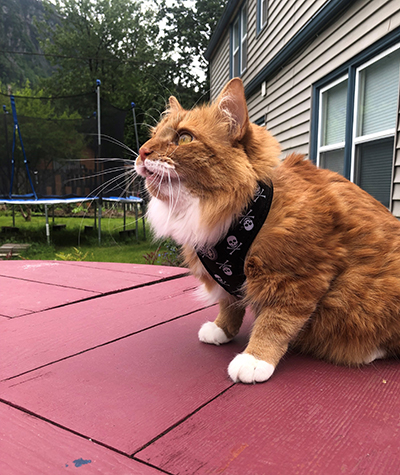
I’ve lived with cats most of my life. As a kid in Oregon, I never thought about what they did in their spare time. Cats went outside and they came back. They left mice and songbirds on the doormat. Friends that lived on farms had barn cats - wary mousers that were never given cat food. I’d use my cat-whispering skills to coax them down from the feather-littered haylofts, and sometimes I could pet them and play with their kittens.
Years later in Juneau when my fiancé moved in, she brought her two cats, massive Maine Coon brothers 2-years-old that had been indoors since kittenhood. She had been concerned about traffic around her place, but my neighborhood was quiet so she decided to let them out. Within a week they were killing birds and fighting with the previously dominant neighborhood tom. I tried bell collars and they just got stealthier. They got better at fighting, too. We moved a couple years later to a mousier neighborhood and they became skilled mousers, which they generously shared with us, and they shredded the neighborhood dogs.
A few years after the brothers died we got a kitten from Juneau Animal Rescue. We’ve kept him inside. The impact that free-range cats have on wildlife finally registered. The brothers were a drop in the ocean of the many cats that range outdoors and their toll on birds and small mammals is significant. They also live more dangerous lives than their indoor counterparts.
Cats in Danger
Outdoor cats are vulnerable to diseases passed on by other cats, and parasites like ticks, fleas and roundworms. They get hit by cars. A UK study found the main cause of death for cats brought into veterinary clinics was trauma, 60% of which were road-traffic accidents. Other forms of trauma include falling, cat fights, and getting mauled by dogs. They risk death or injury from wild predators such as coyotes, bears, foxes and even great horned owls. When a cat sits in the doorway deciding whether or not to go outside, it's not just considering the weather. Allowing your cats to roam outdoors can significantly shorten their lives.
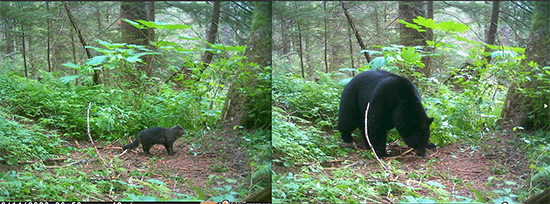
Cat safety (traffic in particular) is the main reason people chose to keep a cat indoors, and in the US, 63% of domestic cats are kept entirely indoors. Cat owners cite concerns about cats depredation on wildlife as the other main reason.
Birds in the crosshairs
Summer is baby bird season in Alaska, and those babies are the culmination of an entire year of precious effort from their parents. The fledgling robins and warblers hopping through gardens and underbrush as they learn to fly are easy prey for stealthy cats.
Wild birds are not doing well, and cats are just one concern. North American breeding bird populations have declined by 29 percent over the past 50 years – a “staggering decline” according to a study published in 2019 in Science. Grassland birds in particular are in trouble, although forest birds, shorebirds and common widespread songbirds such as warblers, sparrows, blackbirds and finches show significant declines. (Some good news: Hawks and eagles are far more abundant (78 percent increase), osprey populations have quadrupled, and waterfowl numbers have increased 56 percent over past 50 years. Coincidentally, these are not birds that cats prey on).
Cats are not the only cause of bird declines. But we know cats are efficient predators, and it is well-documented that they kill an astonishing number of songbirds. In part, that’s because there are so many cats. Over the past 40 years the number of domestic cats in the United States has spiked. The American Veterinarian Medical Association estimates a quarter of US households (about 32 million) have a cat (or two, the average is 1.8 per household) for a total of about 58 million cats in the US. Other estimates such as Forbes (they provide pet insurance) are even higher, and this doesn’t include feral cats.
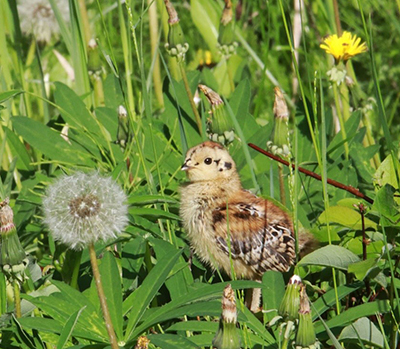
Hundreds of studies have documented local numbers of wild birds and mammals killed by cats. A meta-study published in 2013 in Nature Communications combined these and provided an estimate for kill rates by domestic free ranging cats at 1.3 to 4 billion birds (and 6.3 to 22.3 billion mammals) annually in the contiguous United States. That’s far more than are killed by collisions with buildings, cell towers, and wind farms.
Feral cats live on what they kill. Feral and domestic cats have contributed to the decline and extinction of bird, reptile and mammal species globally. Cats, feral pigs, rodents and dogs have the most pervasive impacts as invasive predators.
Protecting cats and birds
Naomi Davidson lives in Juneau and grew up in Alaska with cats. Last year she decided to keep her two cats inside. Her previous cat was hit by a car, but it was the bird killing that convinced her.
“My neighbor had been watching birds raise their babies in his yard, and one day he told me my cat killed the whole nest of them,” she said. “My other neighbor also said the cats were killing birds in his yard. They didn’t say we had to do anything, they just wanted us to know.”
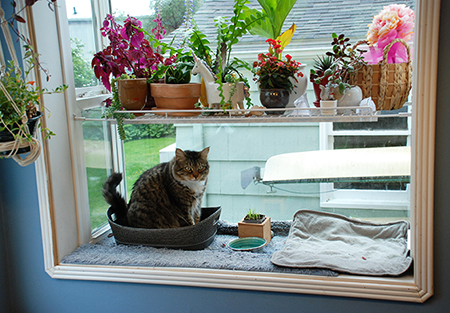
The cats had not been bringing home trophies, she said, and she hadn’t seen the signs.
“We didn’t know, and I’m glad they told us,” she said. “It was not a big sacrifice on our end to keep them in, it seemed like a reasonable thing to do.”
The transition was not easy at first. In the morning when the family was leaving for school and work, the cats would lurk by the entry way and try to slip out. In summer, they learned how to squeeze under the screen door (a baby gate solved that).
“They were mad at first,” she said. “But they learned. Cats adapt. You just have to commit to it and not be wishy-washy or give mixed signals. They are wily and they might escape, but don’t decide not to just because they get out sometimes.”
Nacho and Luna became bird watchers instead of bird killers. And when the Davidsons replaced a cracked dining room window with a nice bay window, they created a designated area for the cats, a cat patio. In the cat world, this is known as a catio.
“They have their cat grass there and their water, and it’s a spot the dogs can’t get into,” she said. “Windows open on both sides and there are screens, but even if the windows didn’t open they’d love it. In the winter I put a heating pad in it.”
She said there are many Do-It-Yourself versions of the catio, including outdoor screened enclosures that cats access through a window, small outside rooms that really are more like patios. Others are simply a cat perch in the window, a window area dedicated to the cat.
“Put it where you will be, they like to be around people,” she said. “When I’m working upstairs, they come up, so I put a cat hammock in that window and they’ll both lay in it. It can hold a lot of weight.”
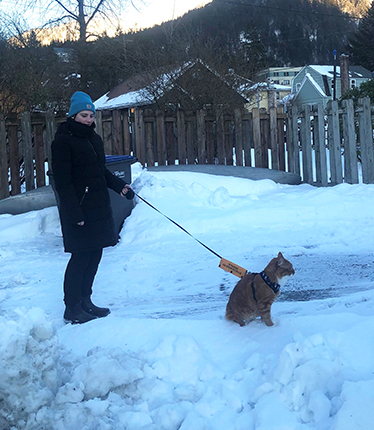
The hammock is a platform attached to the window with strong suction cups and thin wire cables.
When the Davidsons found evidence of mice in their garage, they let the cats go to work and solve that problem. “We let them in the garage and they feel like they are going out,” she said.
Many people have indoor cats that don't want to go out. A transitioned cat will likely miss going out and appreciate some outings. Here in Juneau, a few people walk their cat on a leash with a harness. It’s not like a dog walk, more like a short, supervised outing, but it keeps birds safe.
One neighbor lets the cat out in their fenced yard and sits with her – this is a cat that will come when called. We wanted to try that and first trained the cat to come. It wasn’t hard, as anyone who ever used an electric can-opener to open cat food knows. Since our cat was raised indoors, he was skittish and nervous on his early outings and not prone to running off. He likes some cover and generally sits under a tree chewing on grass and watching birds overhead. Last winter we started walking him on a leash in the yard and adjacent alley. It works.
No doubt converting an outside cat to an indoor cat is much harder than just raising a kitten indoors. But I remember when it was common practice for people to simply “let the dog out,” and dogs ran around neighborhoods knocking over trash cans, chasing cats, and getting hit by cars. People actually walk their dogs these days, and it’s rare to see a loose dog roaming. Over time, attitudes regarding cats are likely to change as well.
“Cats have a wild nature,” Davidson said, “but they aren’t wild animals. They’re domesticated. Saying, ‘Cats will be cats’ is like saying, ‘Boys will be boys,’ it excuses bad behavior. Cats respond to positive reinforcement and rewards, and like dogs, they understand language, ‘Do you want dinner? Do you want to go out?’ You shake a treat box and they come running. My dad taught his cat to come to a whistle. That’s not a wild animal. You can cultivate their domestic nature.”
Links and resources
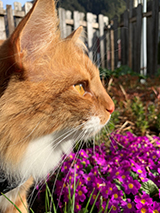
“The impact of free-ranging domestic cats on wildlife in the United States,” Nature Communications 20113”
“Decline of North American avifuana” Science 2019
There is a good summary of that paper here as “Major Findings”
“Invasive predators and global biodiversity loss” PNAS 2016 (Proceedings of the National Academy of Sciences)
U.S. pet ownership statistics from American Veterinarian Medical Association
Indoors or Outdoors? An International Exploration of Owner Demographics and Decision Making Associated with Lifestyle of Pet Cats" Animals, 2021 Animals, publication of MDPI
“Alaska has far too many impractical cats” Anchorage Daily News opinion piece by Rick Sinnott
Subscribe to be notified about new issues
Receive a monthly notice about new issues and articles.
